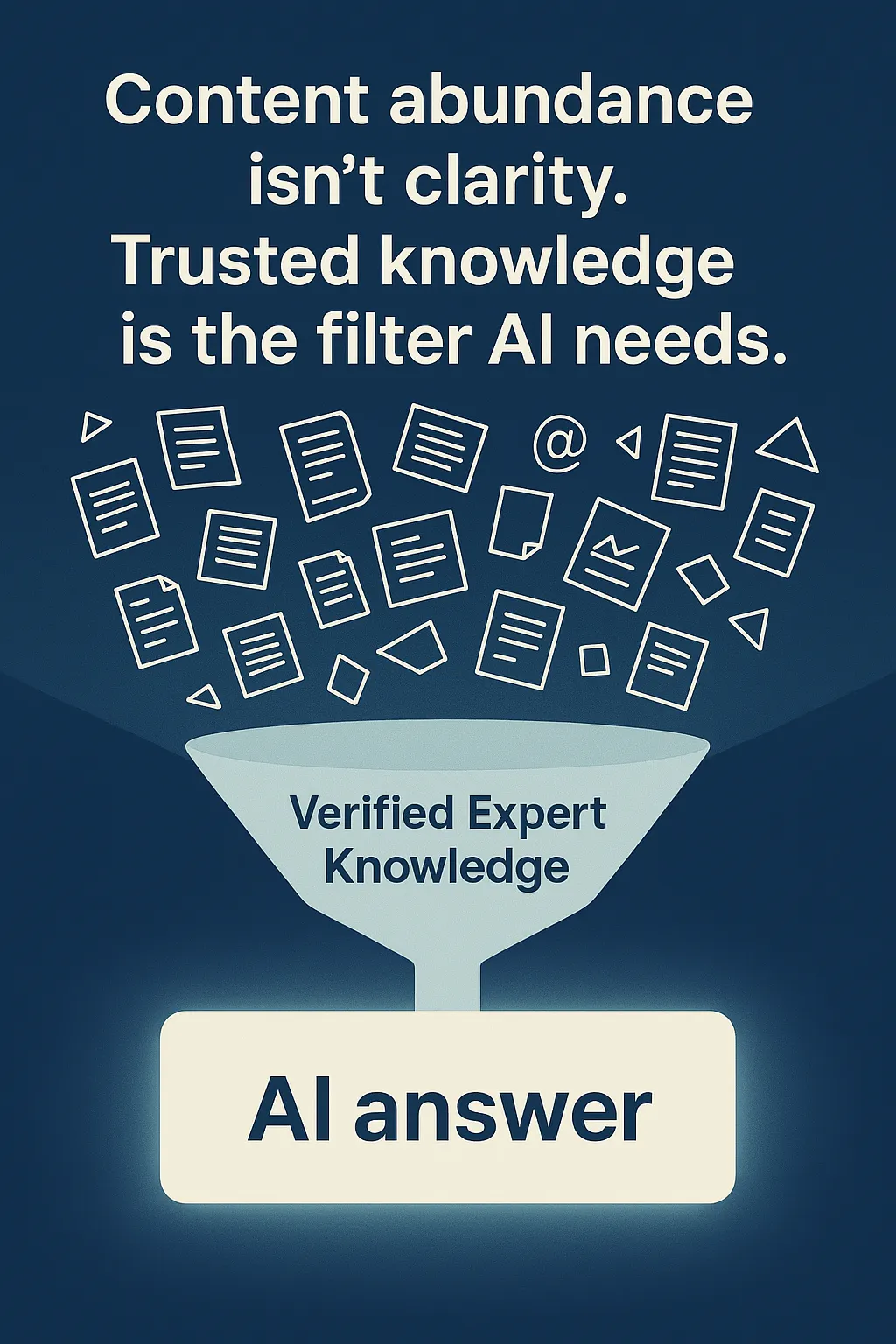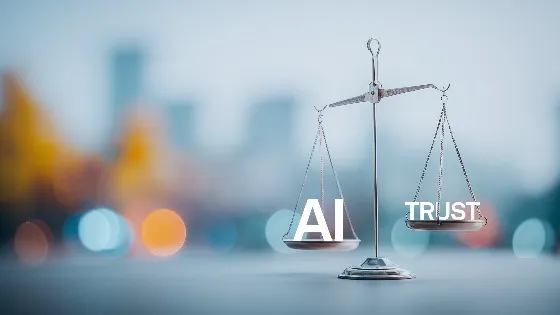Enterprise organizations are racing to deploy copilots, chatbots, and AI agents. But there’s a growing problem: employees don’t trust the answers. According to Deloitte’s Human Capital Trends 2025, adoption stalls when outputs feel unreliable. Teams turn to shadow AI tools, compliance risk grows, and leaders start questioning the ROI.
So, in many cases, model performance is not the primary challenge for an operation. The problem comes from a lack of trust in the knowledge base from which AI models draw. An AI assistant trained on unverified or copyright-risky content will produce polished – but often wrong – answers. When employees can’t rely on it, they stop using it. The result: a costly AI initiative with little impact.

The Trust Premium
In an AI-saturated environment, trust is the real competitive edge. AI grounded in Verified Expert Knowledge (VEK) behaves differently:
- It cites credible, rights-cleared sources.
- It reduces hallucinations and bias.
- It delivers explainable, auditable outputs that employees can act on.
Without trust, AI is just noise at scale. With trust, it becomes a decision partner. That difference translates into higher adoption, reduced rework, faster rollouts, and lower compliance risk.
Why Verified Knowledge Matters for L&D
For learning leaders, credibility is non-negotiable. If Copilot delivers half-truths in Outlook, Teams, or Word, employees won’t use it. Worse, confidence in structured learning programs takes a hit.
The getAbstract Connector embeds Verified Expert Knowledge directly into Microsoft 365. Employees access expert-reviewed insights inside the tools they already use – Teams, Word, PowerPoint, Outlook – without a learning curve. And because the content is continuously refreshed, in multiple languages, it stays both relevant and globally inclusive.
What Businesses Gain
The ROI case is clear. With trusted knowledge powering AI:
- Adoption rises. Employees rely on Copilot when the answers make sense.
- Rework drops. Fewer errors mean fewer wasted hours.
- Rollouts accelerate. Compliance reviews take less time with explainable outputs.
- Risk declines. Rights-cleared sources reduce copyright and compliance exposure
- Future-proofing is built in. The Connector evolves with Microsoft’s roadmap.
Trusted knowledge is the difference between AI that drains budgets and confidence, and AI that delivers measurable impact.
Bottom Line: Build AI People Can Actually Use
The business case for AI is adoption, and adoption depends on trust. Grounding AI in Verified Expert Knowledge is an opportunity to ensure that every answer strengthens user confidence, speeds decisions, and delivers measurable ROI.
That’s why the future of AI won’t be defined by who has the largest model. It will be defined by who has the most trusted knowledge powering it.
Learn more about how the getAbstract Connector for Microsoft 365 grounds AI in trusted knowledge: Trusted Business Knowledge for Your Copilot








